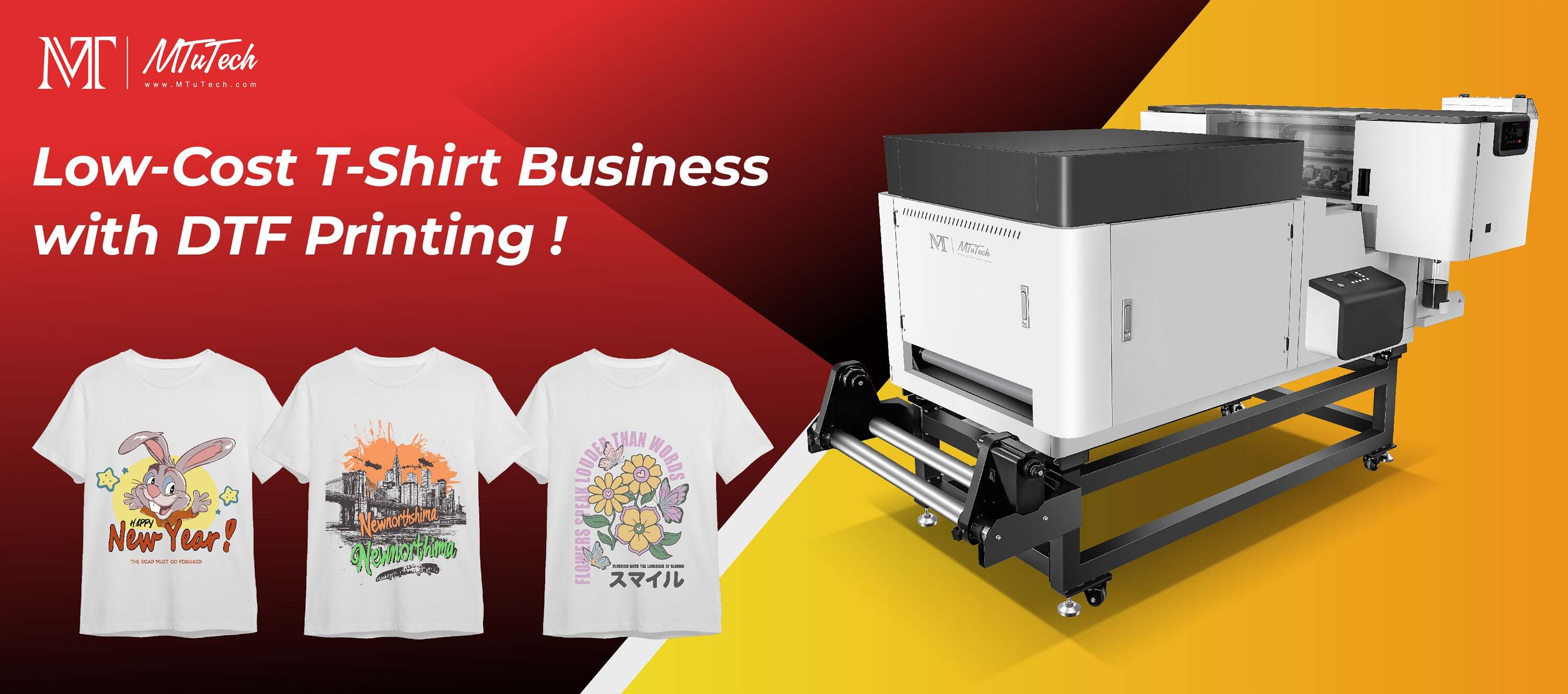Introduction
In recent years, Direct to Film (DTF) printing has gained significant traction within the textile and garment industry. This innovative technology offers a variety of advantages over traditional printing methods, making it a popular choice among businesses. As we look ahead to 2025, several trends are emerging that will shape the future of DTF printing. In this blog, we will explore the top five DTF printer trends to watch, helping you stay informed and prepared for the evolving landscape of digital printing.
1. Enhanced Print Quality
As technology advances, the demand for superior print quality also increases. DTF printers are evolving to meet these expectations through improved print head technology and precision engineering.
Improved Ink Formulations
New ink formulations are being developed to enhance vibrancy, durability, and adherence, allowing for better results on various fabric types. Brands are investing in research to create inks that not only deliver high-quality prints but also withstand washing and wear over time.
Precision Engineering
With advancements in print head design, print resolution continues to elevate. Manufacturers are focusing on delivering finer detail and smoother gradients, making DTF prints look more professional and appealing to consumers.
2. Eco-Friendly Practices
As sustainability becomes a pressing concern for businesses and consumers alike, eco-friendly practices in production are gaining traction. This trend is likely to shape the DTF printing market significantly by 2025.
Water-Based Inks
Many companies are transitioning to water-based inks, which not only reduce harmful emissions but also offer vibrant colors and a softer hand feel on printed fabrics. This shift will likely become standard as the demand for environmentally friendly printing solutions increases.
Recyclable Films and Materials
Manufacturers are exploring recyclable film options, aiming to reduce waste in the DTF printing process.
Utilizing biodegradable or sustainable materials for films can contribute to a more eco-conscious approach in the textile printing industry.
3. Automation and Smart Technology
Automation is revolutionizing various industries, and DTF printing is no exception. In 2025, expect to see more automated solutions integrated into DTF printing processes.
Automated Workflow
Automation of workflows will allow businesses to streamline their production processes, increasing efficiency. Automated systems can handle everything from print preparation to post-print finishing, reducing human error and labor costs.
Smart Connectivity
Smart technology will enhance the DTF printing experience by enabling real-time monitoring and data analysis. Printers connected to the Internet of Things (IoT) can provide valuable insights on performance and help in predicting maintenance needs.
4. Customization and Personalization
As consumers increasingly seek unique fashion statements, the demand for customization and personalization in DTF printing is expected to rise profoundly by 2025.
On-Demand Printing
Businesses are moving towards on-demand printing setups, allowing them to produce small batches with customized designs without incurring high costs. This model is particularly appealing for e-commerce brands catering to niche markets.
Fast Turnaround Times
With advancements in printer technology and workflow automation, businesses can now offer rapid turnaround times for custom orders. This capability empowers companies to meet the growing consumer demand for personalized products quickly.
5. Integration with E-Commerce Solutions
The rise of e-commerce has transformed the way products are marketed and sold. By 2025, DTF printers will become even more integrated with e-commerce platforms, fostering a more seamless purchasing experience.
Print on Demand Solutions
Print-on-demand solutions allow for a direct link between online orders and the printing process. Customers can select their designs online, and orders are printed per request, reducing inventory costs and waste.
Custom Design Online Tools
Many e-commerce platforms are incorporating design tools that enable customers to create their unique graphics and text directly. Integration with DTF printers will streamline the order fulfillment process, making it easier for businesses to cater to customer needs.
Conclusion
The landscape of DTF printing is evolving at a rapid pace, driven by technological advancements, sustainability efforts, and consumer demand for personalization. By keeping an eye on these top five trends, businesses can better position themselves to adapt and thrive in this competitive market. As you prepare for the future of DTF printing, consider investing in the latest technologies and sustainable practices, ensuring that your operations remain efficient, environmentally friendly, and responsive to customer preferences.
To get ahead in the DTF printing game, you can explore our high-quality DTF printers here and find the perfect solution for your business needs.
FAQ
What is DTF printing and how does it work?
DTF printing stands for Direct to Film printing, a process that involves printing designs onto a special transfer film, which is then heat-pressed onto fabrics. This method allows for vibrant colors and detailed designs on various material types.
What benefits does DTF printing offer compared to traditional methods?
DTF printing provides several advantages, including better color vibrancy, the ability to print on various materials, durability, and lower setup costs. It is especially cost-effective for small runs and custom orders.
Are DTF printers eco-friendly?
Many modern DTF printers are moving towards sustainable practices by using water-based inks and recyclable materials. Companies prioritizing eco-friendly options can significantly reduce their environmental footprint.
How can businesses benefit from customization through DTF printing?
Customization allows businesses to cater to individual customer preferences, thus enhancing customer engagement and satisfaction. On-demand printing also reduces waste and inventory costs associated with standard bulk production.
What should I consider when investing in a DTF printer?
When investing in a DTF printer, consider factors such as print quality, speed, user-friendliness, maintenance requirements, and the type of ink it uses. Additionally, look into the manufacturer's support and warranty options to ensure a reliable purchase.

